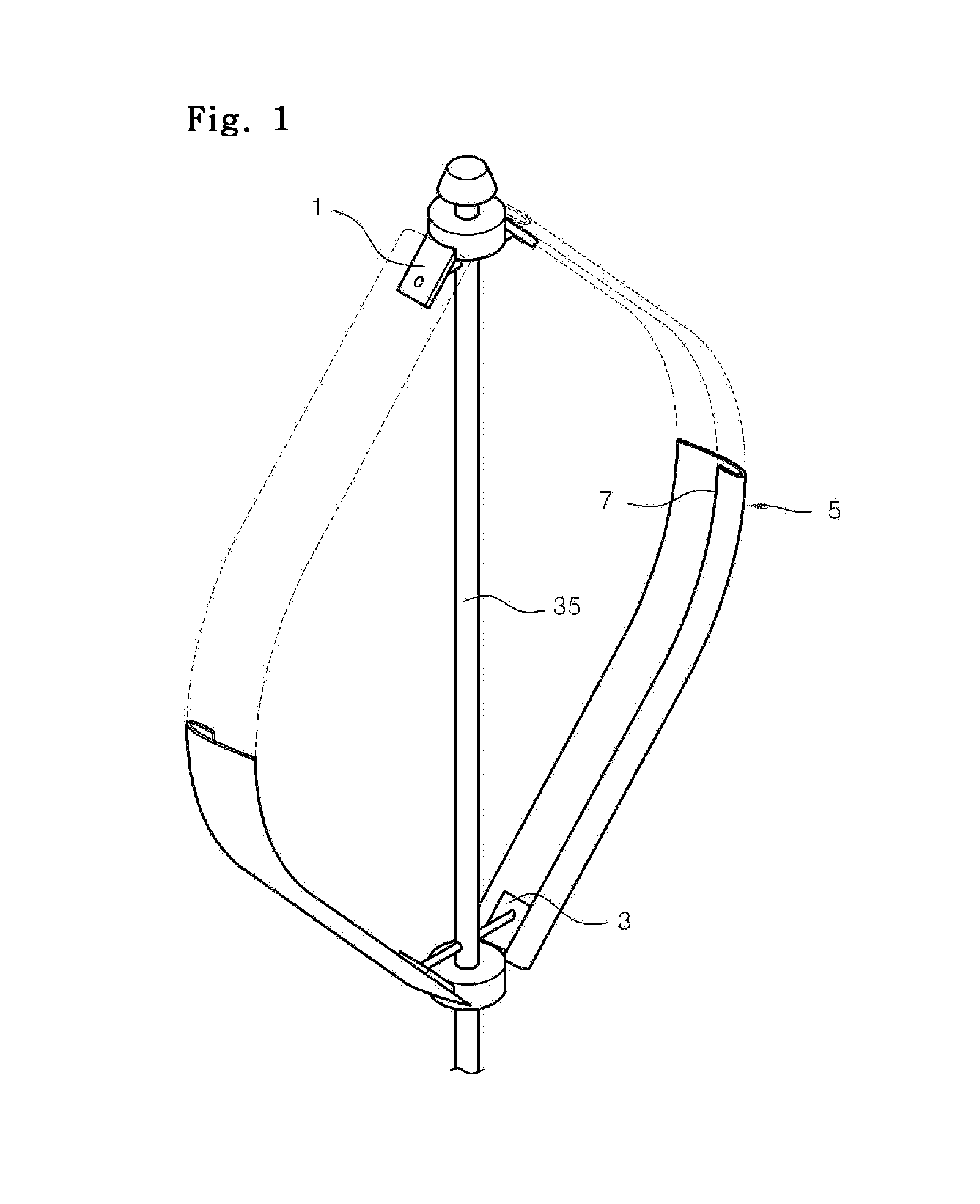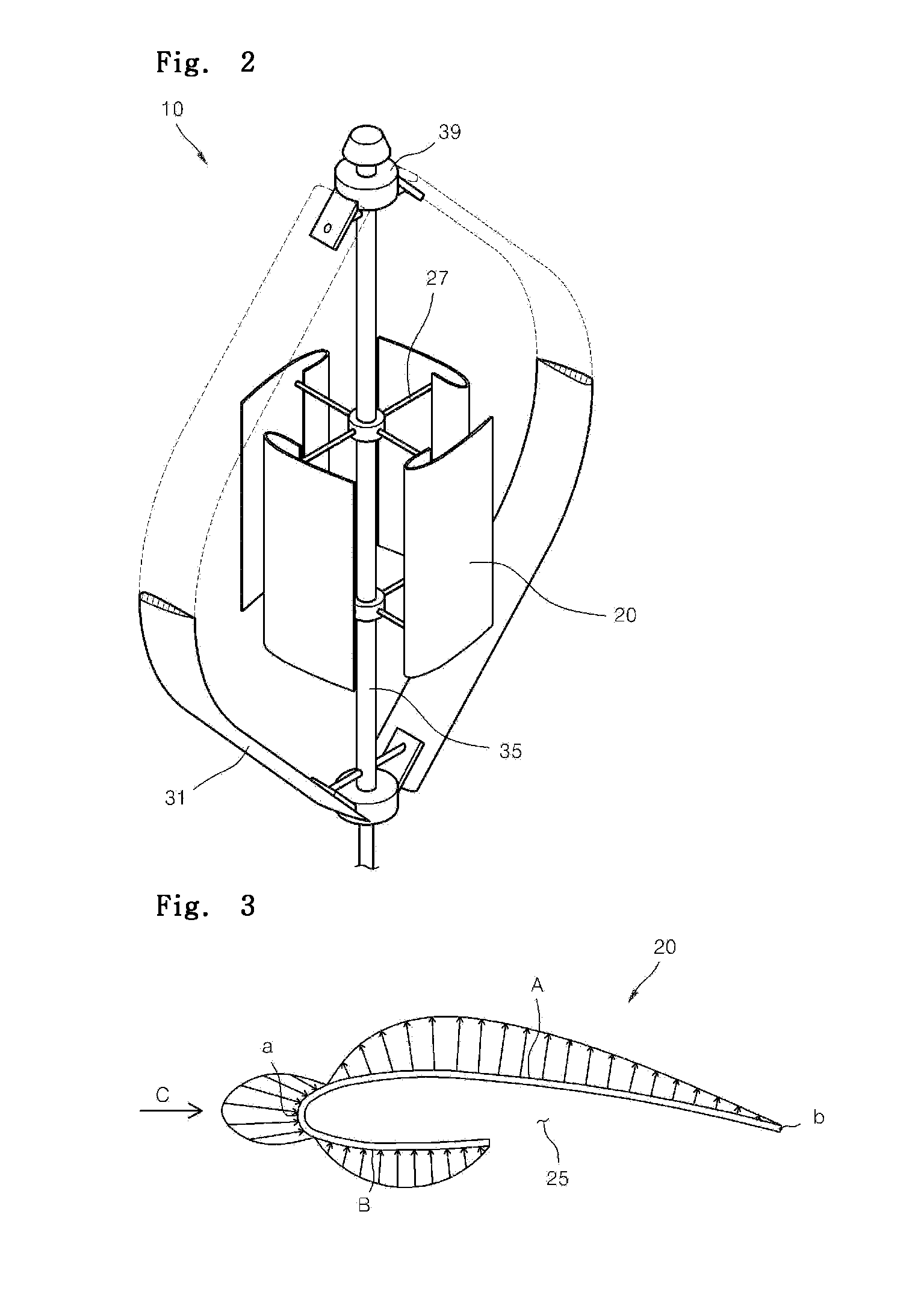Vertical shaft type darius windmill
a vertical shaft and windmill technology, applied in the direction of electric generator control, renewable energy generation, greenhouse gas reduction, etc., can solve the problems of poor aerodynamics performance, low generating efficiency, and increase in wind speed, so as to achieve excellent aerodynamics characteristics, easy operation, and wide range of wind speed effects
- Summary
- Abstract
- Description
- Claims
- Application Information
AI Technical Summary
Benefits of technology
Problems solved by technology
Method used
Image
Examples
Embodiment Construction
[0038]Hereinafter, a Darrieus windmill according to preferred embodiments of the present invention is described in detail with reference to the accompanying drawings.
[0039]FIG. 1 is a perspective view showing a Darrieus windmill according to an embodiment of the present invention, FIG. 2 is a perspective view showing a Darrieus windmill according to another embodiment of the present invention, FIG. 3 is a view showing pressure distribution around a secondary blade used in FIG. 2, FIG. 4 is a view showing rotation of the secondary blades used in FIG. 2, FIG. 5 is a cross-sectional view showing a Darrieus windmill according to another embodiment of the present invention, FIG. 6 is a cross-sectional view showing the structure of a one-way clutch used in FIG. 5, FIG. 7 is a cross-sectional view showing a Darrieus windmill according to another embodiment of the present invention, and FIGS. 8 and 9 are perspective views showing a Darrieus windmill according to another embodiment of the pr...
PUM
 Login to View More
Login to View More Abstract
Description
Claims
Application Information
 Login to View More
Login to View More - R&D
- Intellectual Property
- Life Sciences
- Materials
- Tech Scout
- Unparalleled Data Quality
- Higher Quality Content
- 60% Fewer Hallucinations
Browse by: Latest US Patents, China's latest patents, Technical Efficacy Thesaurus, Application Domain, Technology Topic, Popular Technical Reports.
© 2025 PatSnap. All rights reserved.Legal|Privacy policy|Modern Slavery Act Transparency Statement|Sitemap|About US| Contact US: help@patsnap.com



